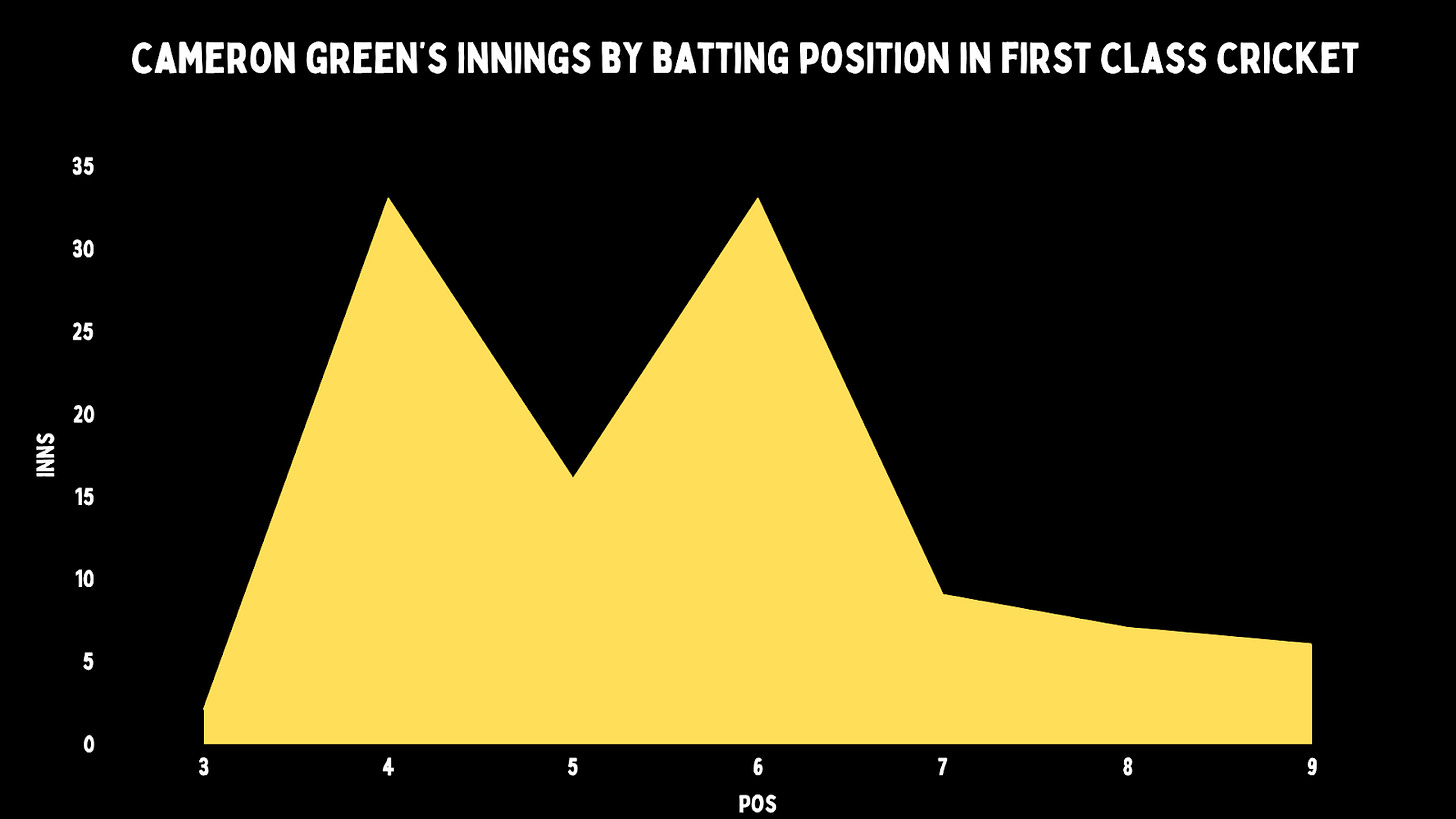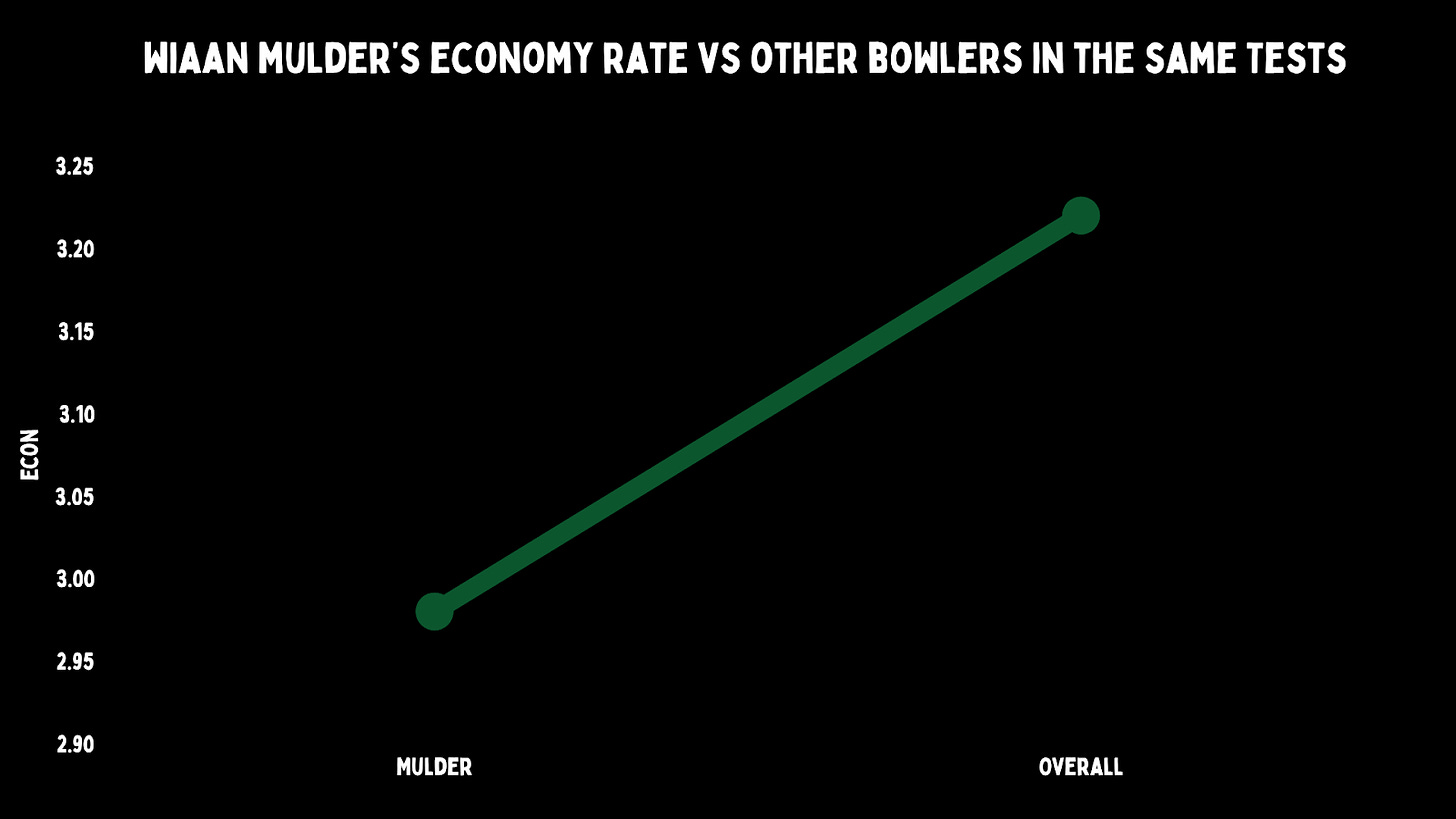South Africa and the miracle that didn't help
Stealing Smith’s wicket with part-time filth and a double fumbled catch was still not enough.
Part man, part octopus, Marco Jansen is trying to gather the ball at slip, and you can see a moment where this game goes in two different directions.
If he takes the ball, South Africa still have a chance of a first innings lead - which to a team like them is their only chance of winning a match like this. If it’s dropped, Smith goes on to make a big score and carries the shaky Australian batting line up to a total that has South Africa in trouble.
What is incredible about this moment is that the bowler was Aiden Markram, who was on only to change ends of the fifth option, Wiaan Mulder. Sometimes your star bowler gets the wrong end, or needs a change, and so a part-timer will come on. But it doesn’t happen as much for a bowler like Mulder, who himself isn’t a specialist.
But due to South Africa’s weird usage of Rabada, they ended with Markram and his bowling average of 80, having only ever taken three victims, none of which are specialist batters. And he starts like the lowest form of part-time bowling - darty offspin, down the legside. When he does get it straight, Smith runs down to him and tries to get off strike, but Bavuma dives to keep him facing for what turns out to be a significant moment.
The ball is nothing, full outside off. Smith thinks he’s going to pick up an easy boundary through extra cover. It doesn’t spin, even a little bit. Somehow, against all odds - and the history of Markram’s bowling - it takes the outside edge and then goes through to the left of Marco Jansen.
He clutches and drops the ball, then he puts out a tentacle to scoop it up, but fumbles it again. This is the final error he makes though, as he somehow manages to keep the ball close enough to him to pouch it, and Steve Smith is gone.
This wicket was a miracle, it shouldn’t have happened. It was an act of cricketing fate. And yet in the end, stealing Smith’s wicket with part-time filth and a double fumbled catch was still not enough.
There were some who thought South Africa should have batted first, made 300 odd and put pressure on Australia. But that isn’t really this team. Their batting has finally gotten better, but some of that is because they’ve faced weak attacks. And even then, they still average less than the Aussies. If Australia’s best three bats are Khawaja, Smith and Head, that lines up very well against Bavuma, Bedingham and Verreynne. Actually, I don’t even know who their best three batters are, which is kind of the issue.
But they couldn’t just have a decent day. It needed to be wonderful. There was a big chance of that happening when Rabada took two in an over. Two days out from the match, Cummins came around the wicket and worked Khawaja over in the nets. Rabada did the exact same thing, again at his left hip. When Cameron Green tied the battle of the false threes with Mulder, South Africa were on top.
This is probably a little harsh on Cam Green, but he’s not a natural first drop. In his entire first-class career, this was the second time, and the first was because of a second innings order change in a small chase. It is hard to grade him, because he played a terrible shot early in his innings. But it certainly wasn’t a success, and there is no doubt that he would normally be a number 4-6 naturally.
But he isn’t even the strangest number three in this match. Wiaan Mulder averages almost 40 in first-class cricket excluding Tests, which drops to 23 for South Africa. This is the third time in a Test he’s batted here, but again one of those was a second innings order change. He should have been caught by Alex Carey early on. When he first came in, his batting seemed to be buffering; he was so far behind the ball. He barely played a shot, barely hit a ball, and barely troubled the scorers.
His Australian counterpart’s dismissal meant that Australia’s latest opening experiment - Marnus Labuschagne - suddenly had a lot of pressure on him. And he handled that by really getting stuck. At the moment, his movement patterns make it look like he is being moved by an amatuer puppeteer. It is hard to see how opening could help him at all. When Head was snuffled down the legside, South Africa were on top.
Not many rated them highly at the start of the day, so this brought the game back to where they needed it. And they still needed so many things to go right for them. But Rabada didn’t take a wicket in the session after lunch. That was when South Africa having Lungi Ngidi was shown up. The man plays as many cricket matches as a club cricketer with a second house on the beach. His bowling looked like he’d forgotten his run up, and was trying to remember how he used to bowl. South Africa had a five man attack, and Ngidi’s eight overs at nearly a run a ball turned it into four bowlers.
That meant Wiaan Mulder had to step up. And in truth, I’m not sure what his bowling is right now. He moved the ball around for a very long time, like a traditional English seamer. But he isn’t always that accurate, which at 81 mph is never ideal. I think he started chasing wickets, maybe because they needed them, but I wonder if that works for him. In first-class cricket in total, he has 2.3 wickets per game. So I wonder if he wouldn’t be better used as a Colin de Grandhomme/Shane Watson/Jacob Oram type defensive seamer.
So far in his career, he’s gone at just less than three runs per over. That is a long way from Oram’s 2.4, but Jacob was six foot heaps, and played in a slower scoring era.
In the matches Mulder has bowled, the economy rate has been 3.22, while he’s at 2.98. So, on the good side of it. But being he’s never been a big wicket taker, I don’t see that changing at this level. In a quality attack that works really well, but when Ngidi is bowling poorly and spin isn’t a great option, you’re in trouble.
It was that period where Mulder bowled for a long time where Australia got back on top. Or if not on top, had their best batting session with Smith on his way to a certain hundred and Webster in the middle of an uncertain 50.
So that brings us back to Markram’s spectacular moment of arse. Because that kept South Africa in the match, and when Carey fell after a short nagging partnership, Rabada did destroy the tail.
My theory coming in was South Africa was slightly ahead of the game if they rolled Australia for 180, and anything under 220 was manageable. A few deliveries into their innings, and it was clear my numbers were wrong.
The South African quicks seamed the ball 0.78 degrees, which is a lot, and means that Australia probably scored more than they should have. Australia were moving the ball at 0.5 when they bowled, which suggests South Africa underperformed.
So even though they took Australia for 212, that was not as great as it should have been. Rabada said it should have been 160, and even then, I wonder if that was enough. But if 212 was bad, 43/4 is worse.
The Smith catch could have been the difference, instead it was the highlight. A moment of incredible luck where a change bowler who doesn’t take wickets got the edge of the only batter who could make runs on this pitch easily, was dropped, and dropped again, before finally being caught.
It would be unfair to say that South Africa needed a miracle to win this Test. They needed to win the toss and bowl, take Australia cheaply, and then go from there. But that all happened, and then they got the miracle wicket of Smith. The problem is, they already seem to need a few more of them to get back into the game.






